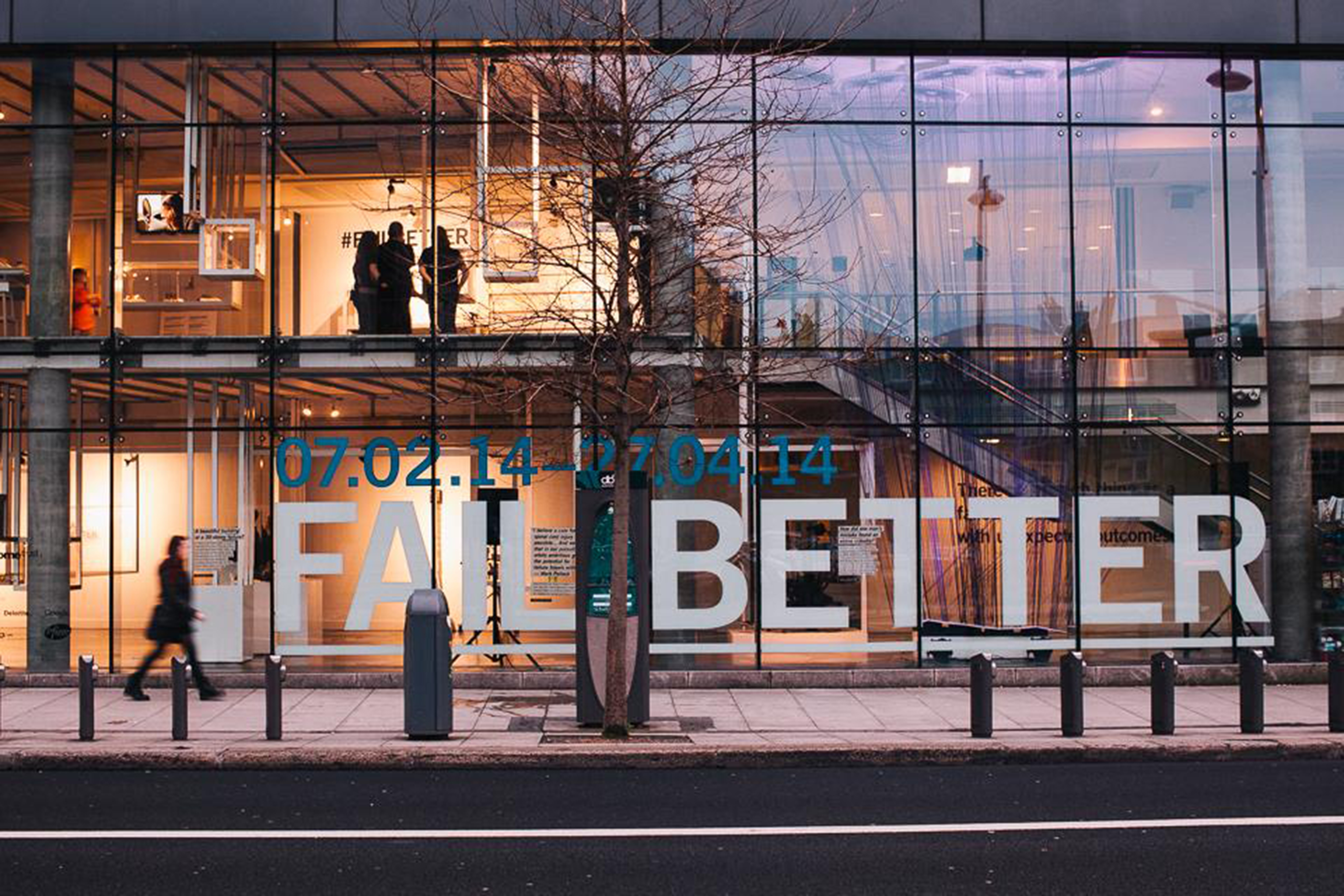Sive Finlay
Staff Writer
We all know what comes next. Try again, learn from your mistakes, don’t be afraid to mess up or as, Nemo’s friend Dory so eloquently put it, “Just keep swimming”! No matter how many times we are told these things it’s still hard to see the positive side of failure. However, Fail Better at the Science Gallery challenges our negative reactions towards failure and inspires us to use failures as instructive experiences.
Each item in the exhibition was put forward by an individual contributor; an impressive collection of people including respected scientists, entrepreneurs, sports stars and adventurers. The result is an eclectic mix of ideas, inventions and events which all involve some form of failure, from laughable absurdity to significant representations of stages on the road to success. Let’s take the funny ones first. The Mars Climate Orbiter is represented by a toy replica of the unfortunate space probe. The original was launched by NASA in December 1998 with the mission to study the Martian environment and to act as a communications device.
However, less than a year into the mission, NASA lost contact with the spacecraft. What went wrong? A rather spectacularly public failure of communication. The controlling software on the ground generated navigational instructions in Imperial units while the system that used those results expected them to be in metric units. Ooops! The result was a disintegrated probe, an embarrassing PR disaster and warehouses full of unsaleable replica toys. In contrast to the unfortunate failure of the Mars Climate Orbiter, the “apparatus for facilitating the birth of a child by centrifugal force” represents a failure on two levels; in the practical application of its use and a failure of sanity in its inventors. The idea is for a woman in labour to be strapped down on her back on a circular table which then rotates at high speed, generating centrifugal force which aids in the delivery of the baby. There’s even a small net to catch the propelled infant. The devices’ inventors got the idea from watching a zoo elephant spin in circles before giving birth. Extrapolation to sending pregnant women into a spin was the obvious next step for the (childless) husband and wife team of George and Charlotte Blonsky. Unsurprisingly the idea didn’t catch on.
The failures represented by many of the other items are more inspirational than laughable. Sometimes failures can bring about unexpected benefits. The striking mauve-coloured threads which feature beside the gallery’s staircase represent William Perkin’s accidental invention of the colour in 1856. Perkin was trying to develop a synthetic version of quinine to treat malaria. He kept failing but his experiments with coal tar led to the discovery of the beautiful colour, mauve. The colour started a trend in fashionable society and led to the foundation of the synthetic dye industry, development of the chemical industry and contributions towards chemicals for the photographic industry. Not a bad outcome from an initial failure. Sonia O’Sullivan’s accreditation pass from the 1996 Olympics represents a very personal and public failure for the athlete. Entering the games as the reigning world champion over 5000m, O’Sullivan failed to live up to all expectations when she did not complete the race at the Olympics. However, once she accepted the failure and “took the decision to walk away from everything in [her] past”, she realised that her previous failure did not define her future. Her efforts were rewarded when she took home the silver medal in the 2000 Olympic Games. It’s difficult not to be inspired by such an honest and open admission of defeat and her steadfast refusal to let such a public failure destroy her subsequent career.
One of the most poignant pieces in the exhibition is “Superman’s Wheelchair” on loan from the Christopher & Dana Reeve foundation. At one level, the chair represents actor Christopher Reeve’s failed attempts to find treatments for paralysis which would fulfil his dream of a world full of empty wheelchairs. However, the chair also represents the years of dedicated research into spinal cord injury which Reeve championed and the progress which continues to be made in the field. The chair was contributed by Trinity alumnus Mark Pollock, a truly inspirational athlete, adventurer, author and motivational speaker. Left paralysed in 2010 after falling from a second story window, Pollock is now exploring new frontiers in spinal cord injury, in many ways picking up the struggle where Christopher Reeve left off and using the many “failures” of the past to progress towards the promise of future success.
These are just a taste of the many inspiring, surprising, poignant and sometimes just plain weird stories underlying each of the pieces. The exhibition is not as hands-on as most of the gallery’s other recent shows but visitors are still encouraged to get involved via twitter (#FailBetter) and also by writing their own failures on the wall and leaving them for other visitors to see. The result is an interesting mixture of failed driving tests, exams and more than a few embarrassing situations.
Fail Better shows that failure, whether it be funny, inspirational, tragic or instructive, is a fundamentally unavoidable feature of human endeavour. The exhibition encourages us to lose our fear of failure and to embrace the opportunities that it may create. A worthy and inspiring message. It still doesn’t mean that I’d like to try out the philosophy when sitting my next exams… Fail Better runs at the Science Gallery until 27th April 2014. Admission is free.






